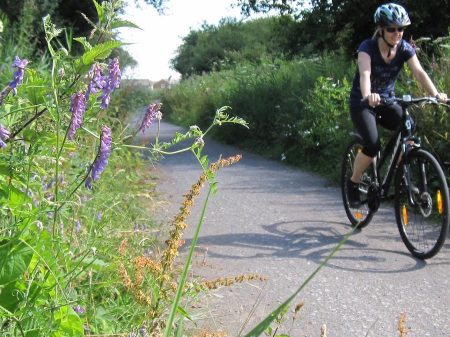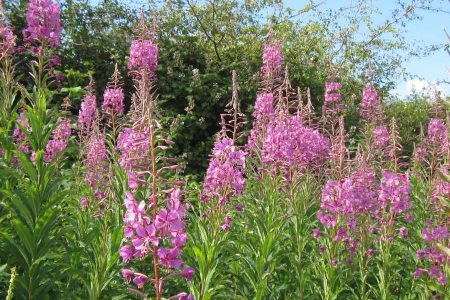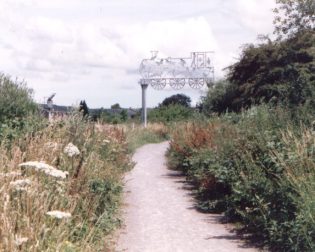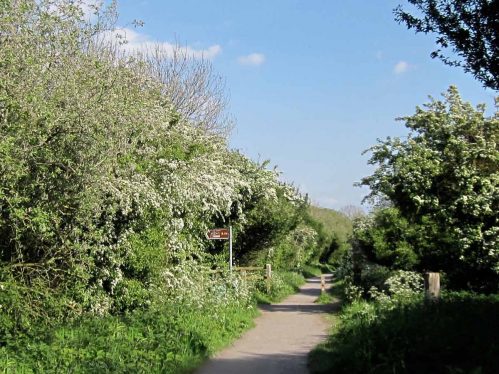
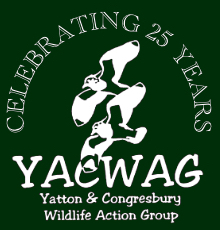
Other nature sites:
Strawberry Line
______
Much of the old railway branch line running between Yatton and Cheddar is now a pleasant countryside walk and shared cycle path.
Through an agreement with Natural England and North Somerset Council, YACWAG manages the biodiversity interest on the Yatton-Congresbury section - which is part of Biddle Street Site of Special Scientific Interest - in conjunction with an agreed management plan.
The Strawberry Line
Panorama by Peter Speight © 2021
![]() = Fullscreen mode. The best way to view the panorama. Click the icon at the bottom right. Whether this works depends on the device or browser you are using.
= Fullscreen mode. The best way to view the panorama. Click the icon at the bottom right. Whether this works depends on the device or browser you are using.
YACWAG’s work is mainly around managing the ditches on a long rotation to create habitat for a wide variety of wetland species, while providing sufficient cover for wildlife. The birdlife on this part of the Strawberry Line is exceptional, particularly in terms of breeding warblers (see Wildlife below).
GRID REFERENCE: ST424660 (start of trial at Yatton station car park).
SIZE: The distance from Yatton to Cheddar is approximately 10.5 miles.
OWNERSHIP: North Somerset Council.
MANAGEMENT: YACWAG, Natural England and North Somerset Council.
PUBLIC ACCESS: Start and end of trail at the far end or Yatton Station car park. Next access point in Yatton is at Biddle Street, which becomes Chescombe Road leading to High Street. There is a public footpath which links the line to Mendip Road alongside the allotments, but this may entail walking through a field of cows. At the Congresbury end the line intersects with the Weston Road (A370).
HISTORY: The Cheddar Valley railway line used to run from Yatton to a village beyond Cheddar called Witham. It’s commonly known as The Strawberry Line due to the large volume of locally grown strawberries which were transported on the old branch line to the mainline station of Yatton where the produce could be distributed nationally.
The northern end of the railway line linking Congresbury to Yatton was built from 1867 onwards. Due to the low lying marshy environment the trackbed was raised to form an embankment. This was partly made of local clay that was dug from pits along the route. Much of the workforce were Irish labourers known as "navvies" (navigators). These days the pits have become deep ponds and are important wildlife habitats.
Wildlife
The site attracts a rich variety of wildlife. Here are some of particular interest.
Amphibians & Reptiles
- Common Frog, Common Toad, Newts
- Grass Snake
- Slow Worm
Birds
- Birds of Prey: Hobby (Falcon), Buzzard, Kestrel and Sparrowhawk.
- Doves: Stock Doves, Collared Dove.
- Gulls: Black-headed Gull, Herring Gull, Lesser Black Backed Gull.
- Owls: Tawny Owls, Barn Owls.
- Tits: Blue Tits, Great Tits and Long-tailed Tits.
- Warblers: Cetti’s Warbler, Grasshopper Warbler, Reed Warbler, Sedge Warbler.
- Blackbird
- Blackcaps
- Bullfinch
- Chaffinch
- Chiffchaff
- Cormorant
- Dunnock
- Fieldfare
- Goldcrest
- Greenfinch
- House Martin
- Lesser Whitethroat
- Meadow Pipits
- Moorhen
- Pheasant
- Redwing
- Reed bunting
- Robin
- Snipe
- Song Thrush
- Swallow
- Swift
- Water Rail
- Whitethroat
- Woodpigeon
- Wren
Insects:
- Dragonflies (in April and May look out for the Hairy Dragonfly)
Location
Biddle Street
Yatton
North Somerset
Bristol
BS49 4EY
(note: access also via Yatton Station car park, and at the Congresbury Yeo, off the A370 Weston Road, Congresbury, BS49 5EB)
© Copyright YACWAG, or original authors. All rights reserved. | Registered charity 1076362 | Privacy policy | Cookie policy | Terms & Conditions |Web design: StanfordGraphics
